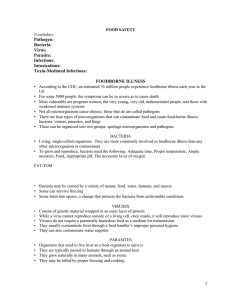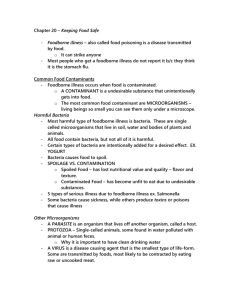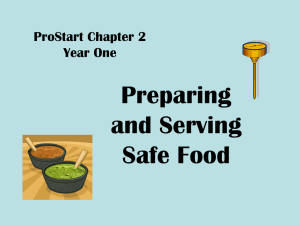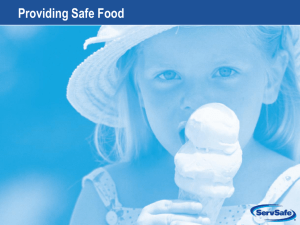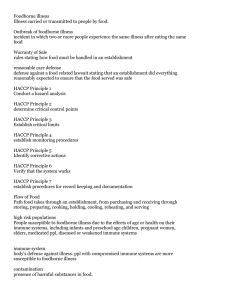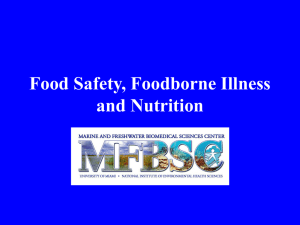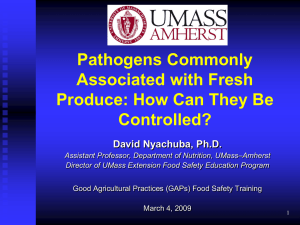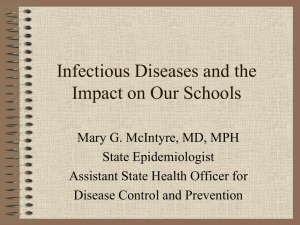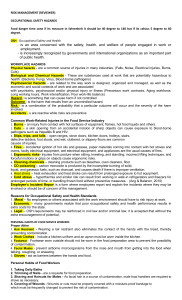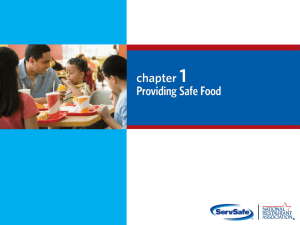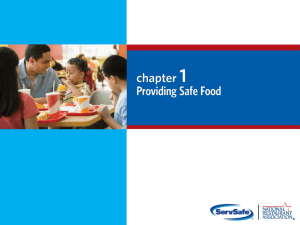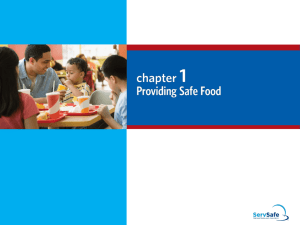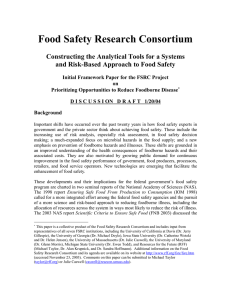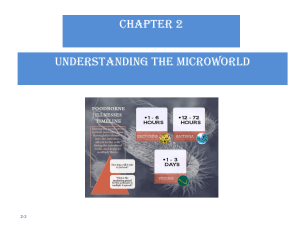Food Safety
advertisement
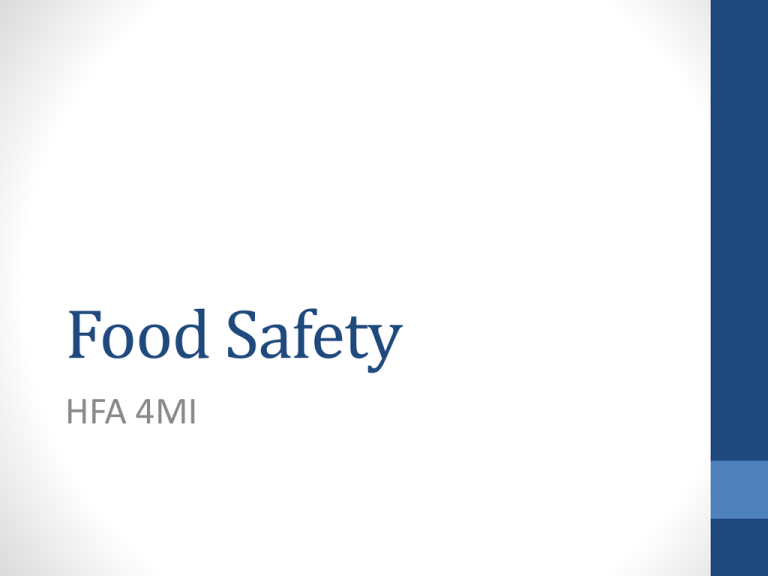
Food Safety HFA 4MI What is a Safe Food? • Absence or acceptable and safe levels of contaminants, adulterants, naturally occurring toxins or any other substance that may make food injurious to health • Basically, “safe food” means food that is free from anything that can cause harm to people Food Safety vs. Food Quality Food Safety • Food that will not cause harm to the individual consuming it Food Quality • All of the features that make a product valuable to the consumer • Positive things: colour, flavour, texture • Absence of negative things: spoilage, discoloration, off odours Food Safety Culture • When everyone takes their share of responsibility for food safety, a strong food safety culture results • In a strong food safety culture, everyone believes in food safety Food Hazard • Anything that may cause illness or injury if not controlled or prevented Potentially Hazardous Foods • Food capable of supporting growth of pathogenic microorganisms or production of toxins Factors: • High protein, low acid, moisture • Large surface area (e.g. ground meat) • Skin or rind • Cooking and cooling • Improper storage of cooked food Types of Food Hazards • Three types: • Physical • Biological • Chemical Physical Hazards • Can cause physical injury to consumer • Examples: • Introduced by: • Food handlers • Harvesting • Foreign objects such as process glass, metal fragments, dirt, stones, staples, • Physical fingernails, hair environment • Undesirable parts of where food is food such as bone prepared fragments in ground meat Controlling Physical Hazards • Food handling rules (hair covering, no jewellery) • Checking and maintaining equipment Chemical Hazards • Any type of unwanted chemical substance in food • Includes: • Accidentally added cleaning chemicals, pesticides or similar substances • Intentionally added chemicals like additives and nutrients, added incorrectly • Allergens Allergens • Substances in food that cause allergic reactions in some people • Body releases natural chemicals that cause allergic symptoms which may be minor to life threatening • Minor: Itchiness, swelling of tongue and throat, skin rash or hives, nausea, vomiting, difficulty breathing • Life threatening: Anaphylactic shock – whole body reaction Controlling Allergens • Cross-contamination can occur with allergens • Tiniest amount is a serious concern • Be aware of and follow workplace rules concerning allergens • Separation, sanitization and other rules • Accurate labelling Biological Hazards • Living organisms or the substances they produce that are harmful to people: • Bacteria, viruses, parasites and fungi (microorganisms) • Natural toxins from some plants, seafood and mushrooms • Pathogens are microorganisms that cause illness in humans FOOD BORNE ILLNESS Foodborne illness: Infections vs intoxications Infections • Ingested pathogenic microorganisms (i.e. bacteria, virus or parasite) multiply and imbed the gastrointestinal tract, producing inflammation • Samonella, E. coli, Campylobacteria and Listeria Intoxications • Toxins are produced in food by growth of bacteria before food is ingested • Toxins, not bacteria, cause illness • Staphylococcus, Clostridium botulinum Not expected to memorize specific infections and intoxications Cases and Outbreaks • A case of foodborne illness is when an individual becomes ill from consuming a food • An outbreak of foodborne illness occurs when two or more persons become ill from consuming the same food • An unexpected, unexplained increase of disease occurring at a given time and place Under-reporting of Foodborne Illness • Exact number of foodborne illnesses unknown because of under-reporting • Under-reporting may be due to one of many factors: • Ill person does not seek medical care • Physician does not obtain specimen for diagnosis • Laboratory does not perform necessary test • Illness and laboratory findings are not communicated to public health department Populations at Particular Risk • Elderly persons • People with AIDS, cancer, kidney disease, and some other chronic diseases • People treated with immune-suppressing drugs • Children under 2 years of age • Pregnant women and their unborn babies • People with history of alcohol abuse or drugs References: Institute of Food Processing. (2012). Food Safety – Level One, Conestoga College.
